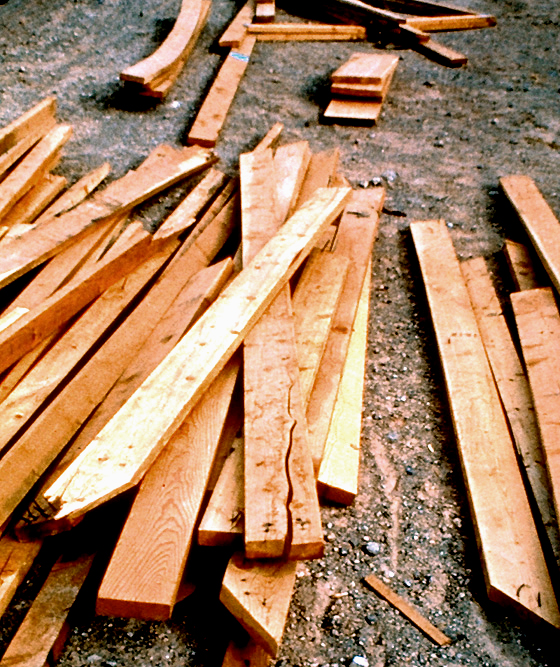Part 1: The Inconsistencies of Lumber
This is the first of three articles explaining why pre-engineered rigid-frame steel buildings are the preferred method for low-rise construction.
Below is a discussion of the problems inherent in wood framing in which we’ll compare steel vs. wood to highlight steel’s superiority as a building material. The second article highlights the pros and cons of light-gauge steel framing. The third article focuses on the many advantages of prefabricated red-iron metal buildings.
The Irregularities of Wood Framing
The wood building is an imprecise discipline. It must approximate the framing loads based on the average strength of a particular type of wood.
 Every tree species has entirely different fortes and characteristics.
Every tree species has entirely different fortes and characteristics.
Each tree within a species varies widely. Location, age, weather patterns, soil, insect infestations, and disease all mark the attributes— and the deficiencies— of every single tree, and therefore the lumber milled from that single tree.
Given all these variables in wood, how can anyone accurately predict how lumber will behave under stress?
Even after it is harvested and milled into lumber, changing temperature and humidity in and around the lumber causes wood studs to mutate.
After construction, wood framing continues to expand and contract at different rates along its width, depth, and length. Consequently, wood framing twists, warps, bends, splits, and creeps over the years.
Just turning on the heating or cooling in a new wood building starts lumber moving. As the lumber creeps, the nails start to back out. Wood builders are all too familiar to “nail pops,” their number one source of callbacks to a job.
This process of the loosening of wood framing lasts for the lifetime of the structure. Doors and windows start to warp and close poorly, creating drafts that waste heating and cooling dollars.
Harvesting Small, Immature Trees
Today younger and younger trees are harvested to meet the demand, magnifying the inconsistencies of the wood.
Younger trees produce even more unpredictable lumber. Smaller, greener trees hold more moisture, so they warp, twist, and split more easily than old-growth lumber.
Immature lumber also contains more defects and blemishes like knots, wane, and splits. Builders must sift through lumber shipments and discard the worst pieces— sometimes as much as 10%-20% of the order.
Did you know that the so-called 2×4 studs used in today’s wood framing are actually only 1-1/2-inches by 3-1/2-inches in size? How is that for being erratic?
Clearly, there is no way to achieve consistent quality with old-fashioned wood framing.
RHINO Steel Buildings: The Best Deal in Construction
RHINO Steel Building Systems supplies high quality prefabricated steel buildings to the agriculture, aviation, commercial, and industrial markets in North America. No building system offers stronger or more consistent and dependable structures at more affordable prices than RHINO metal buildings.
Call a RHINO steel building adviser now at 940.383.9566 to discuss your project and receive a fast, friendly, free quote.
Related Blogs:
